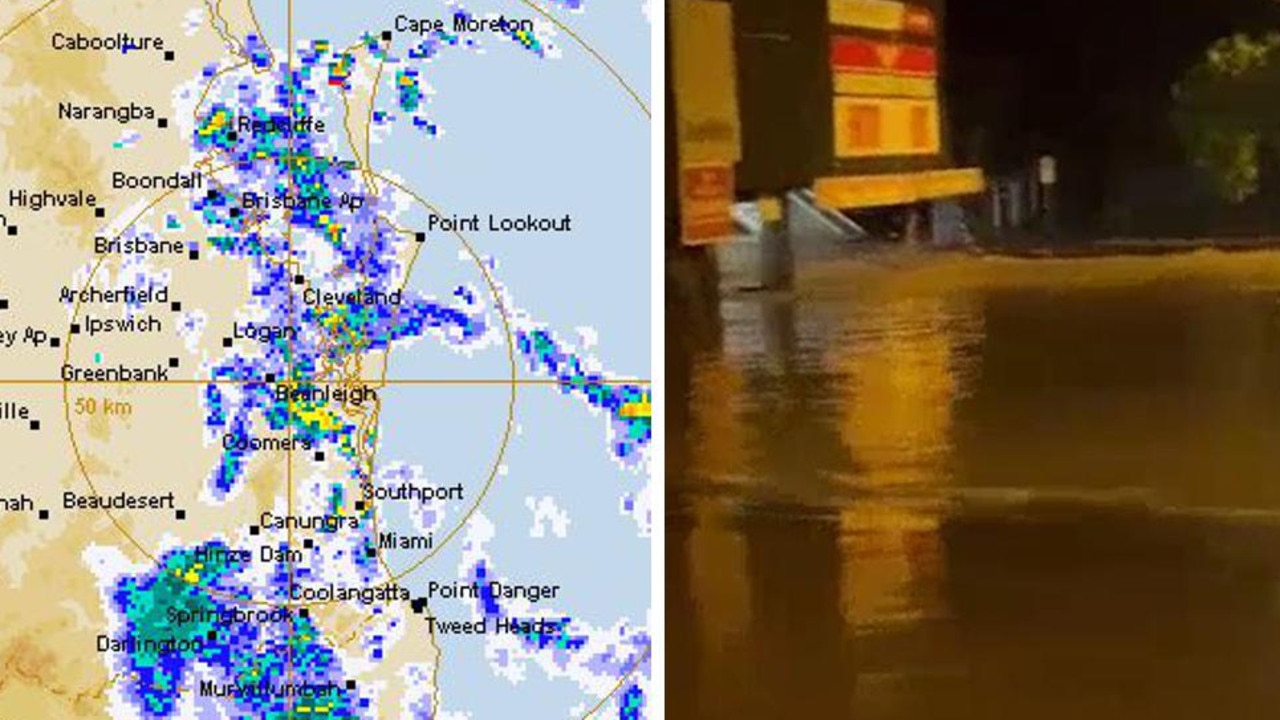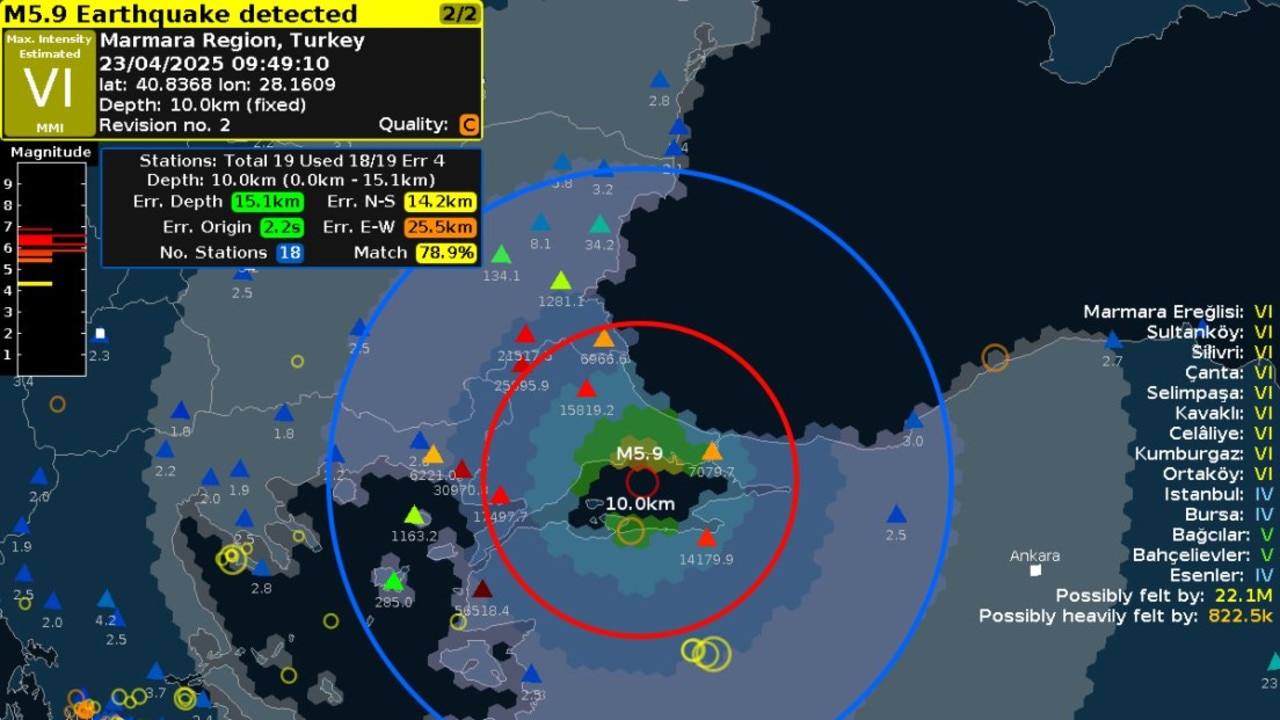Towns in central NSW ordered to evacuate as fires rage in unprecedented heat
RESIDENTS of a tiny village in the NSW central west have been urged to leave their homes as fires rage in unprecedented conditions.
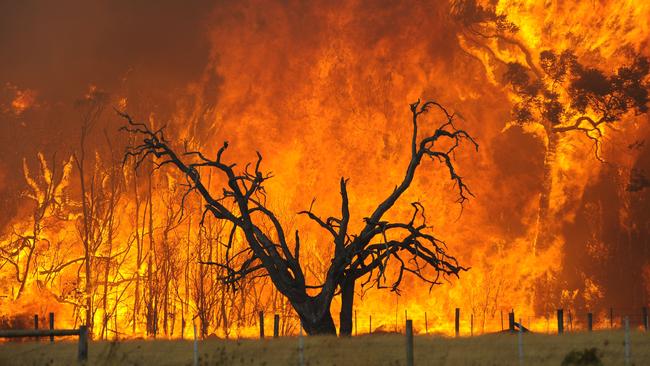
PARTS of Australia are continue to face “catastrophic” fire conditions as a heatwave sweeps across the country and threatens power outages in NSW and South Australia.
NSW firefighters are bracing for catastrophic fire conditions across large parts of the state. At 5am on Sunday, the NSW Rural Fire Service advised there were 76 bush or grass fires burning across the state and 21 of those were not contained.
Residents of a tiny village in the NSW central west have been urged to leave their homes after one of dozens of fires burning across the state breached containment lines.
At 11.40am on Sunday, the NSW Rural Fire Service (RFS) updated its advice messages for the areas around Uarbry and Turill to an emergency warning. Residents of those areas were urged to leave towards Cassilis if the path was clear.
.@RFSCommissioner briefing: "These conditions are unprecedented not just in NSW but Australia, worse than Black Saturday forecast" #nswrfs pic.twitter.com/dST0g73hKr
— NSW RFS (@NSWRFS) February 12, 2017
“Emergency alert telephone messages are being sent to people in the area,” the RFS said.
The fire was burning in catastrophic conditions and would spread quickly, the warning read.
“It will be difficult for firefighters to contain the fire.” The blaze was previously listed as being more than 2000 hectares in size and moving in an easterly direction.
“That is a dangerous, fast-moving fire that has broken containment lines,” RFS spokesman Paul Best told the ABC after the advice was upgraded. Large areas of NSW are experiencing unprecedented fire danger conditions over the weekend as a trough produces hot, dry and gusty winds.
At least one home may have been destroyed in the NSW bushfires, according to reports emerging on sunday afternoon.
Authorities have been unable to confirm the reports, but say a number of properties have been affected by a large blaze burning in the state’s central west, east of Dunedoo.
Deputy Rural Fire Service Commissioner Rob Rogers said the fire was moving quickly - about 12km/h.
“The information we have is that a number of homes have been impacted by fire in that area,” he told the ABC.
“We have to get in there and have a look at that later on.”
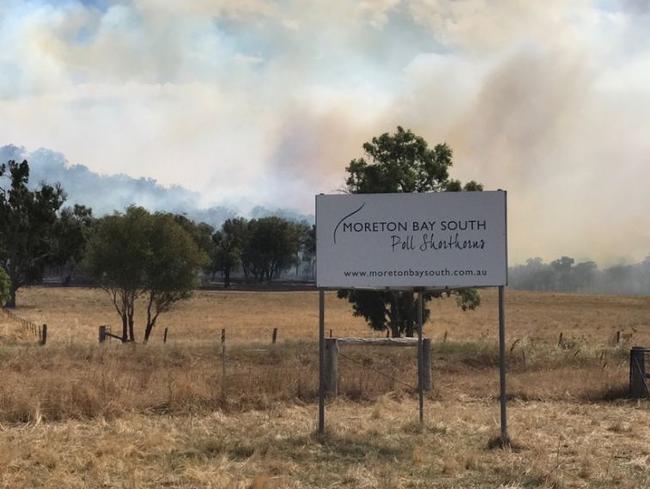
NSW, Queensland and Victoria experienced extremely hot conditions on Saturday and into Sunday with the mercury to climb well beyond 40C in many locations. The heat is expected to continue throughout the weekend before things cool off early next week.
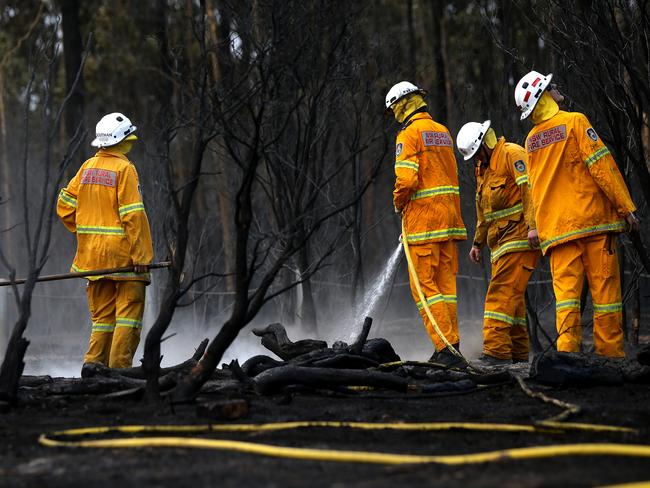
A statewide fire ban has been declared for NSW with catastrophic conditions expected today in the state’s central west, across the tablelands to the Hunter Region and out to the coast.
The Bureau of Meteorology said a trough was moving northeast from the central region, producing very hot, dry and gusty northwesterly winds.
“This will produce widespread severe to catastrophic fire conditions in central and northern districts,” the bureau said.
The Hunter Region will cop the brunt of the extreme heat with Singleton and Cessnock topping the predicted temperatures. On Saturday, residents experienced a top of 46C and will battle through another hot day today, with the mercury set to reach 43C on Sunday.
Western Sydney reached 44C on Friday with the city forecast for a cooler 38C. The western Riverina town of Hay reached 47C.
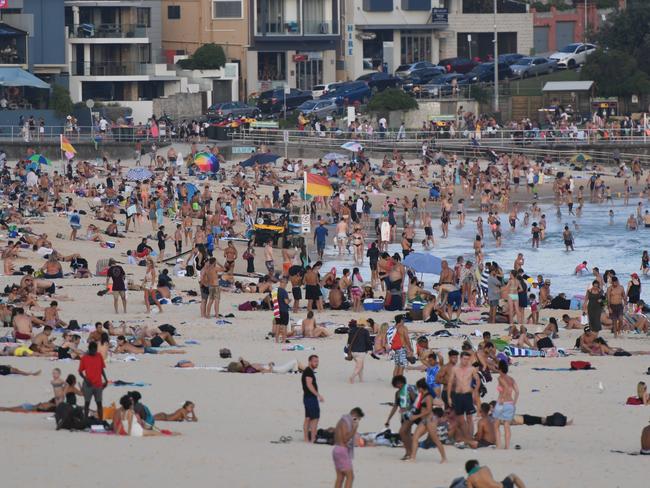
Earlier, about 11,000 homes and businesses lost power in Sydney’s west and fears of more blackouts across the state prompted the NSW government to plead for residents to limit their energy use on Friday afternoon.
Energy provider AGL cut power to an aluminium smelter in the Hunter Valley to supply electricity to nearby schools, homes and small businesses on Friday afternoon.
The Australian Energy Market Operator warned of potential “load shedding” across NSW on Friday to keep the network stable.
But after 5pm the AEMO downgraded its forecast shortfall reducing the risk of blackouts.
Load shedding caused by peak power demand resulted in up to 90,000 homes and businesses being deliberately blacked out in South Australia on Wednesday night. The AEMO ordered a second generator at Port Adelaide to be fired up on Thursday preventing a second night of outages.
SA Energy Minister Tom Koutsantonis is confident the state will have sufficient electricity supplies on both Friday evening and Saturday but he’s still questioning management of the national market over the earlier power cuts. Mr Koutsantonis says the AEMO had “got caught napping” and “dropped the ball” in its management of electricity supplies.
But Prime Minister Malcolm Turnbull on Friday continued to suggest it was the SA government that had failed to provide backup energy to support its “massive introduction of renewables”.
Victorians haven’t been spared from the effects of the heatwave with temperatures expected to sit in the low 40s in northern parts of the state on Saturday before cooling down on Sunday.
Conditions are set to be more brutal in parts of Queensland, with the mercury forecast to reach 46C in several southwest towns including Birdsville, which could smash its February heat record of 46.2C on Sunday and possibly break the Queensland record of 46.5C.
Queensland authorities issued warnings about dehydration after three school students were hospitalised north of Brisbane suffering heat-related problems on Friday.
Queensland University of Technology Professor Gerard Fitzgerald urged people to check the colour of their urine to ensure proper levels of hydration.
Hot, windy conditions tomorrow are causing extreme to catastrophic fire danger conditions through #NSW. https://t.co/X6BgxiQthV pic.twitter.com/mIP1hWVPen
— BOM Australia (@BOM_au) February 11, 2017
Sunday’s tinder dry conditions are being likened to those in the lead-up to Victoria’s Black Saturday blazes, which killed 173 people in 2009.
“It’s not another summer day, it’s not another bad fire weather day. This is as bad as it gets,” RFS Commissioner Shane Fitzsimmons said of the conditions.
“To put it simply, they’re simply off the old conventional scale. We used to stop our fire danger ratings at 100. We’re talking indices tomorrow up over 150, 160, which is quite extraordinary,” he said.
Extreme to catastrophic fire danger ratings are forecast for centres including Dubbo, Coonabarabran and Narrabri in the north through to the Hunter Valley and the coast at Port Stephens on Sunday, Mr Fitzsimmons said.
“Everyone in those areas should be considering moving to a safer locations — either contemplating that tonight ... or indeed early tomorrow morning before the risk materialises,” he said on Saturday.
It comes after days of sweltering conditions, with more than 50 towns and centres in NSW surpassing 40 degrees on Saturday.
While the RFS would do everything that it could to prepare for, respond to and prevent destruction, Mr Fitzsimmons warned that there were no guarantees. “We simply cannot guarantee that a fire truck will be at every home or at every property under these conditions,” he said.
“We will not guarantee that a warning, a telephone message or a knock on the door will occur for everyone that comes under threat tomorrow.” As the RFS chief spoke, 49 fires were burning across NSW, 17 of them uncontained.
About 300 firefighters were on the ground and thousands more were on standby. Very hot conditions associated with the mass of air and combined with fresh westerly winds over the southern half of the state bought severe fire danger on Saturday for the Central and Southern ranges, Lower Central West and Hunter districts.
More than 50 towns and centres in NSW surpassed 40 degrees by the midafternoon, with the mercury nudging 44C in parts of Sydney’s west.
Penrith reached 46.9C, setting a new record. Its previous hottest peak was 46.5 C in Jan 2013.
Ivanhoe was the hottest part place in the state in the morning hours, recording a pre-lunch top of 45C before climbing towards 47C.

